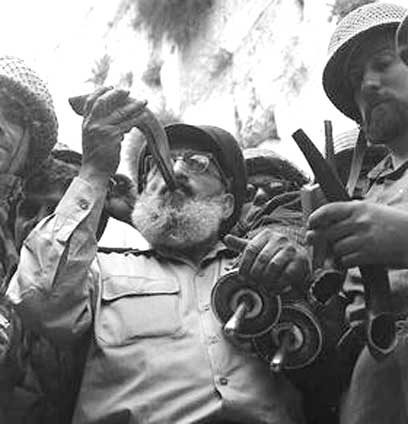There are eery echoes of May 1967 in the Middle East. Back in 1967 the imperialist fascist dictator of Egypt Gamal Abdel Nasser (wanting to be the head of the Arab world) provoked a conflict with Israel over the Straits of Tiran. Nasser was an Arab Nationalist/Imperialist – but not an Islamist, he was also a Soviet stooge. Gathering in Syria, Iraq, and Jordan – huge Arab armies massed on Israel’s borders threatening genocide. Israel not waiting to be invaded, launched a pre-emptive air strike and in a brilliant military victory (June 5 – 10) was triumphant in the Six Day War. That was is proof positive that the aggressor is not always he who fires the first shot but he who makes war inevitable. One should take note that on June 4, 1967 there were no “occupied territories”. Fast forward 45 years later and replace Nasser with Ahmadinejad (and factor in Hamas, Syria, the Muslim Brotherhood, Hezbollah) and we see a similar scenario of genocide enfolding. I still doubt that Israel will launch an attack via the air on Iran (there is no element of surprise) but something is in the works and Obama’s fecklessness is not helping the situation.
by Charles Krauthammer
In May 1967, in brazen violation of previous truce agreements, Egypt ordered U.N. peacekeepers out of the Sinai, marched 120,000 troops to the Israeli border, blockaded Eilat (Israel’s southern outlet to the world’s oceans), abruptly signed a military pact with Jordan and, together with Syria, pledged war for the final destruction of Israel.
May ’67 was Israel’s most fearful, desperate month. The country was surrounded and alone. Previous great-power guarantees proved worthless. A plan to test the blockade with a Western flotilla failed for lack of participants. Time was running out. Forced to protect against invasion by mass mobilization — and with a military consisting overwhelmingly of civilian reservists — life ground to a halt. The country was dying.
On June 5, Israel launched a pre-emptive strike on the Egyptian air force, then proceeded to lightning victories on three fronts. The Six-Day War is legend, but less remembered is that on June 1, the nationalist opposition (Menachem Begin’s Likud precursor) was for the first time ever brought into the government, creating an emergency national-unity coalition.
Everyone understood why. You do not undertake a supremely risky pre-emptive war without the full participation of a broad coalition representing a national consensus.
Forty-five years later, in the middle of the night of May 7-8, 2012, Prime Minister Benjamin Netanyahu shocked his country by bringing the main opposition party, Kadima, into a national unity government. Shocking because just hours earlier, the Knesset was expediting a bill to call early elections in September.
[……]
Because for Israelis today, it is May ’67. The dread is not quite as acute: The mood is not despair, just foreboding. Time is running out, but not quite as fast. War is not four days away, but it looms.
Israelis today face the greatest threat to their existence — apocalyptic mullahs publicly pledged to Israel’s annihilation acquiring nuclear weapons — since May ’67. The world is again telling Israelis to do nothing as it looks for a way out. But if such a way is not found — as in ’67 — Israelis know they will once again have to defend themselves, by themselves.
Military Is Ready
Such a fateful decision demands a national consensus. By creating the largest coalition in nearly three decades, Netanyahu is establishing the political premise for a pre-emptive strike, should it come to that. The new government commands an astonishing 94 Knesset seats out of 120, described by one Israeli columnist as a “hundred tons of solid concrete.”
So much for the recent media hype about some great domestic resistance to Netanyahu’s hard line on Iran. Two notable retired intelligence figures were widely covered here for coming out against him. Little noted was that one had been passed over by Netanyahu to be the head of Mossad, while the other had been fired by Netanyahu as Mossad chief (hence the job opening).
For centrist Kadima (it pulled Israel out of Gaza) to join a Likud-led coalition whose defense minister is a former Labor prime minister (who once offered half of Jerusalem to Yasser Arafat) is the very definition of national unity — and refutes the popular “Israel is divided” meme. “Everyone is saying the same thing,” explained one Knesset member, “though there may be a difference of tone.”
To be sure, Netanyahu and Kadima’s Shaul Mofaz offered more prosaic reasons for their merger: national service laws, a new election law and negotiations with the Palestinians. But Netanyahu, the first Likud prime minister to recognize Palestinian statehood, did not need Kadima for him to enter peace talks. For two years he’s been waiting for Mahmoud Abbas to show up at the table. Abbas hasn’t. And won’t. Nothing will change on that front.
Read the rest – Echoes of 1967: Israel unites in 2012





